We followed the directions for our first viewing - before we had any idea that it was a building in which good friends already owned an apartment – and we loved the street.
It’s what we think of as classically old-world European. It’s got a lived in, genuine feel.
Years ago, when we were having tea in the Cotswolds in England and reading about the room around us we were struck by how different it was to what we were accustomed to. Dude A builds his tavern. It gets passed down and sold and then passed down again until hundreds of years later it’s been a tavern, a shop, a restaurant, a tavern (again), a tea house. You don’t slap something together and 20 years later tear it down and build yourself a McMansion.
The same is true in Lisbon, and because of that, the buildings on this street look roughly as they did when they were first built. Well, with the exception of that prolific redeveloper, The Earthquake of 1755.
We love going to old buildings. Ok, one of us loves old house museums, and the other is wiling to create distractions so that the first can sneak into the off-limits attic or basement. In all of those cases in the US, we may be drooling over an old building that’s in a paved parking lot. Not thinking pavement was a big thing back in the 1800s in the US. The henhouse, barn, servant’s or slave’s quarters? Gone. Other homes in the area? Taken down for a parking garage. And forget the outhouse! In the United States if something is old, most of the time everything else around it has been torn down and changed. You have no idea how that building looked or functioned as part of a neighborhood. We know of one St. Louis landmark that was almost lost to a highway. We’re happy it was saved, but it’s surreal to look out the front door and know you could throw a rock and hit that highway. There’s no sense of how that home would have fit into its surroundings.
Here all buildings are the original age and the streets are left as they were. Other than what was damaged or destroyed by the earthquake, most of Lisbon tends to be as it was originally constructed, but particularly so in our neighborhood.
Unlike our old neighborhood, this one feels almost classically suburban - in so far as it’s laid out on a grid.
Like Rua do Salitre, our current street, Rua do Passadiço has an evocative name. Passadiço means walkway or passageway in English. Each side street has its own unique peek-a-view to the Lisbon cityscape.
They’re also all quite narrow. And, of course, one way - as is Rua do Passadiço. This narrowness has been the source of both amusement and terror in the short time we’ve lived here. Fortunately, Josie has become a pro at this.
Rua da Caridade is one of the few places in the area wide enough to support parked cars. Which, of course, makes driving a challenge.
Some of the other side streets can usually support through traffic. Just not always.
The most interesting bits happen when larger vehicles try to make turns.
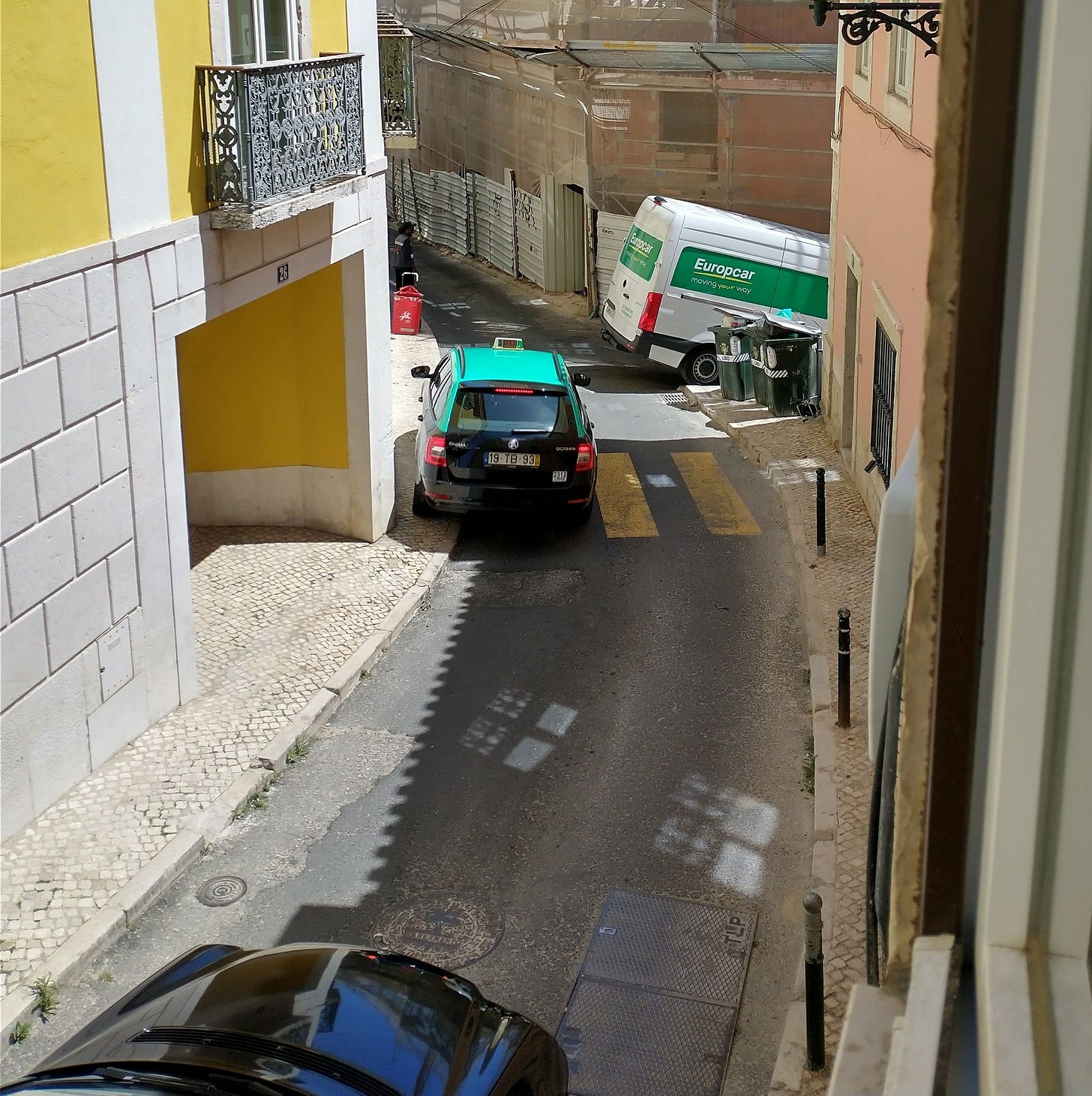
If there’s anything that illustrates the collective patience of the people who live here, it’s these several car backups that occur with startling frequency. Whether the cause is a delivery truck or a driver who’s misjudged a turn, people wait quietly for the street to clear.
There are unquestionably areas of Lisbon - including our former neighborhood - where drivers lay on their horns for 10-15 seconds at a stretch (to no effect, of course, other than to make a bad situation worse), but that has not happened here. Perhaps it’s the realization that the sound echoing off the buildings would deafen all in the vicinity including the initiator that has people keeping their hands on the wheel. Regardless of the reason, we’re grateful.
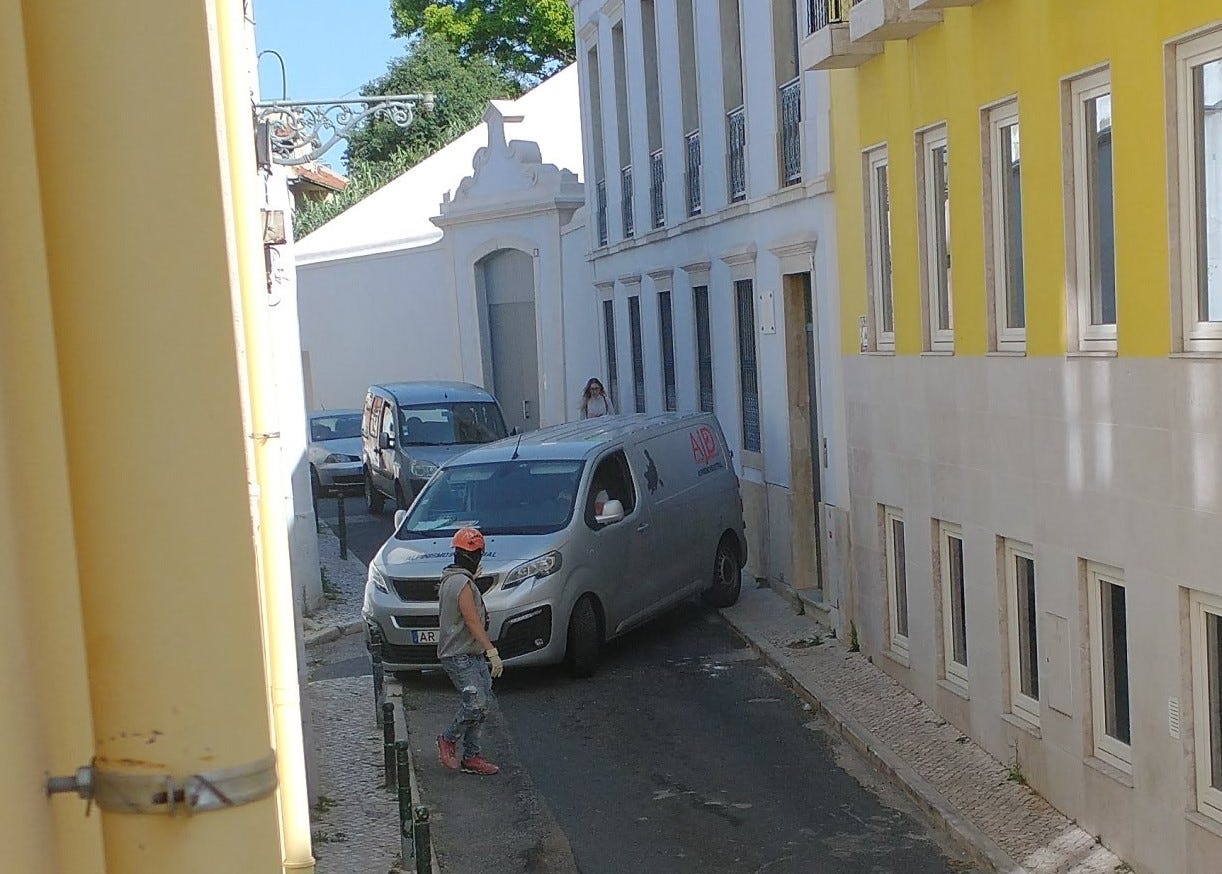
The other result is that there’s no parking on most streets. Including in front of our building. From literally Move In Day we have had challenges getting stuff delivered to us. We regularly see the postal carrier walking down the street, packages in hand, off on a delivery. We start hunting for his van and simply can’t find it. Who know how far they walk in a day.
In general, this area is quieter than our previous one. Because our bedroom looks out on the street, and because we’re a floor closer to ground level, though, the noise we do hear from the traffic (which is less than before) and from people walking by (more than before) is amplified at night. The narrowness of the street also give the noise an extra bounce. Voices - sometimes speaking English, sometimes Portuguese, sometimes something else entirely - echo from far down the street, slowly increasing in volume before finally passing by our building and, just as slowly, fading back into the darkness. When we leave the windows open in the beautiful weather it can be less than ideal. We’re adjusting to it.
As we’re sure you’ve picked up, we are massive fans of cobblestone sidewalks. Our cobblestones here are not the super slick and shiny kind we had at Rua do Salitre, but a somewhat grippier variety. Thankfully! Sadly, though, we haven’t any pretty designs to entertain us. Not that there’s room: these sidewalks are like the streets - NARROW. And they are slanted, making them perilous on a hill. So it’s the street cobblestones for us - and most people.
That’s all for now.
Love from Lisbon,
Scott & Amy

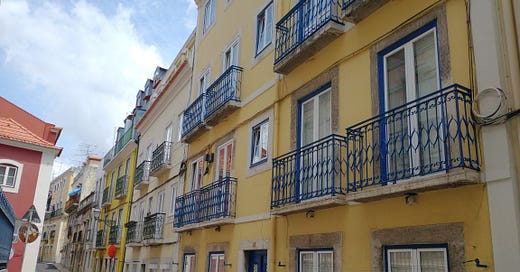




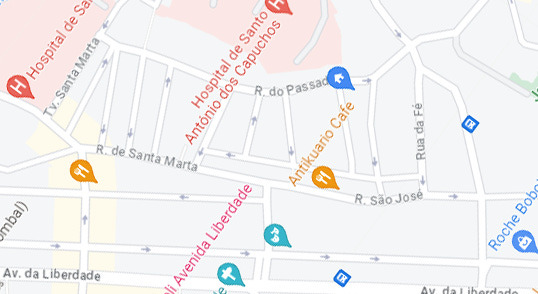
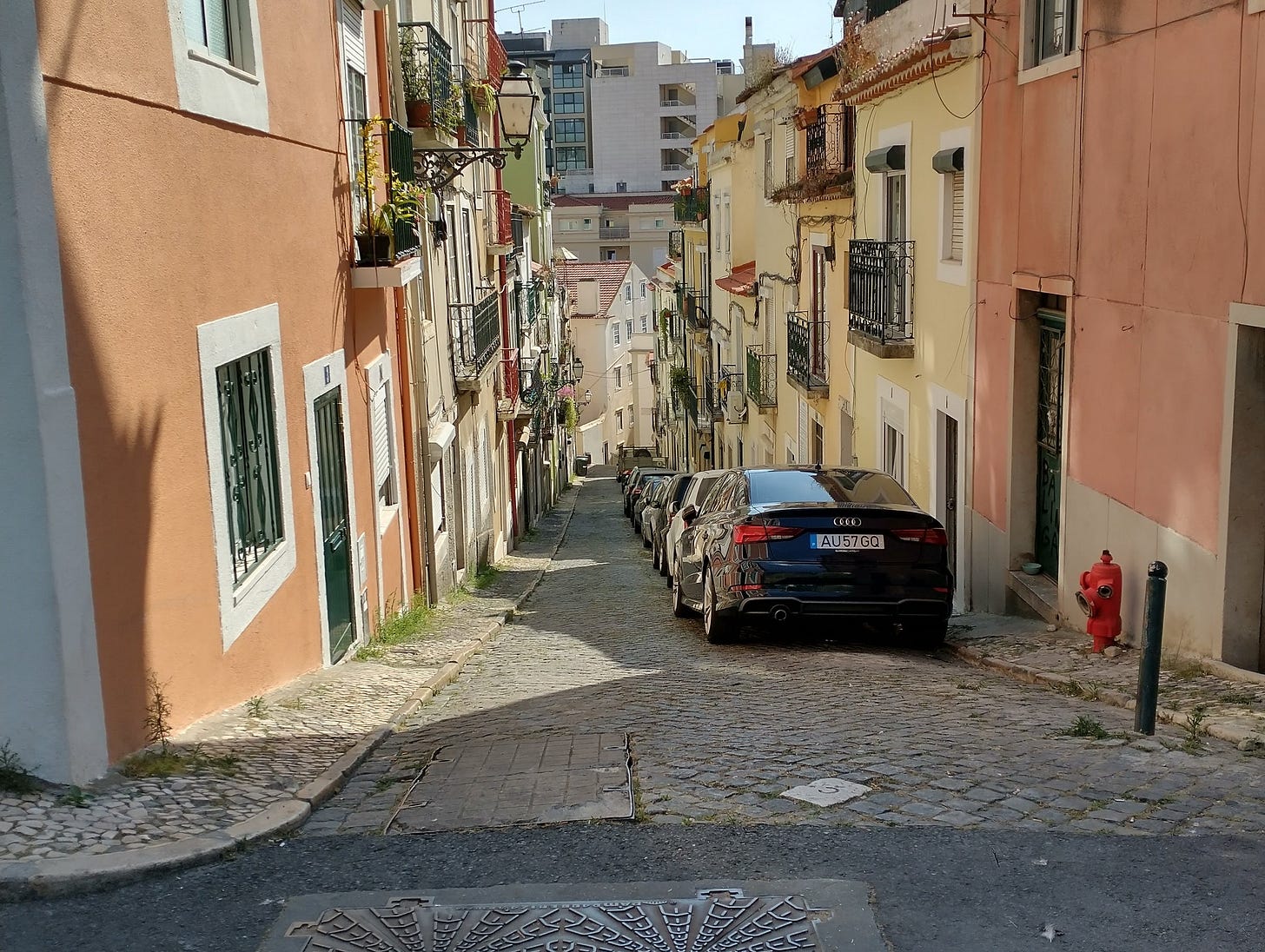
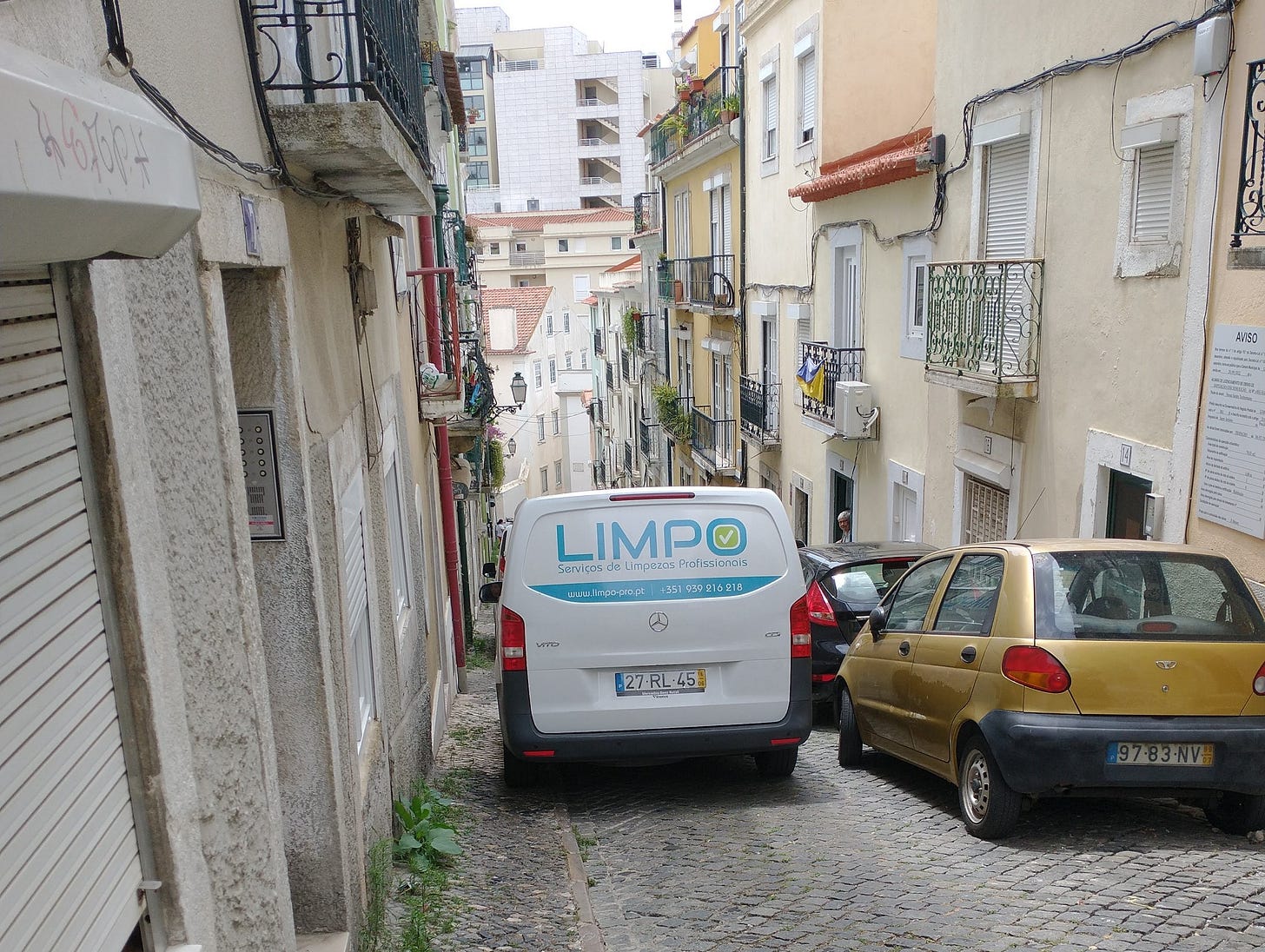
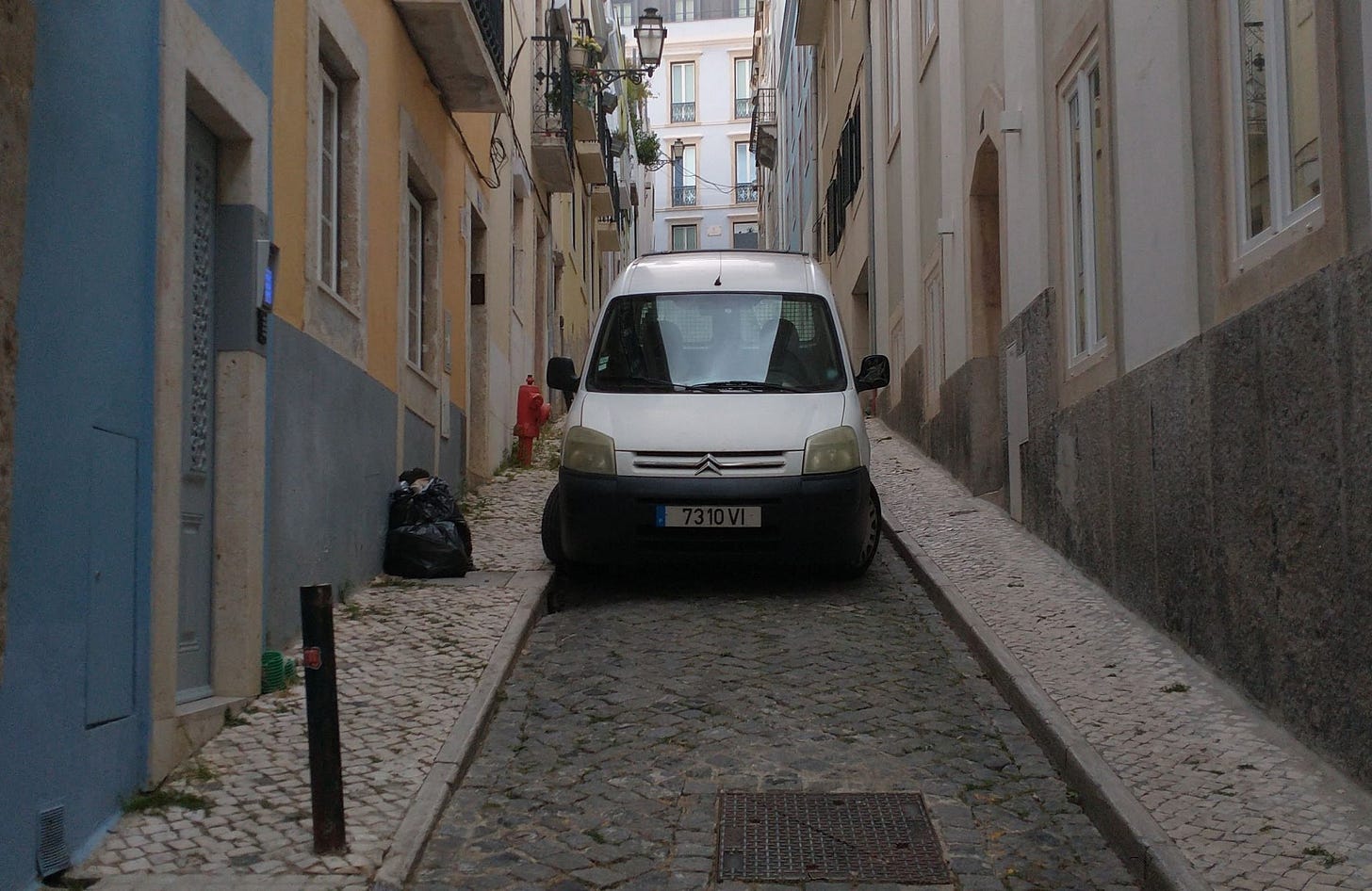
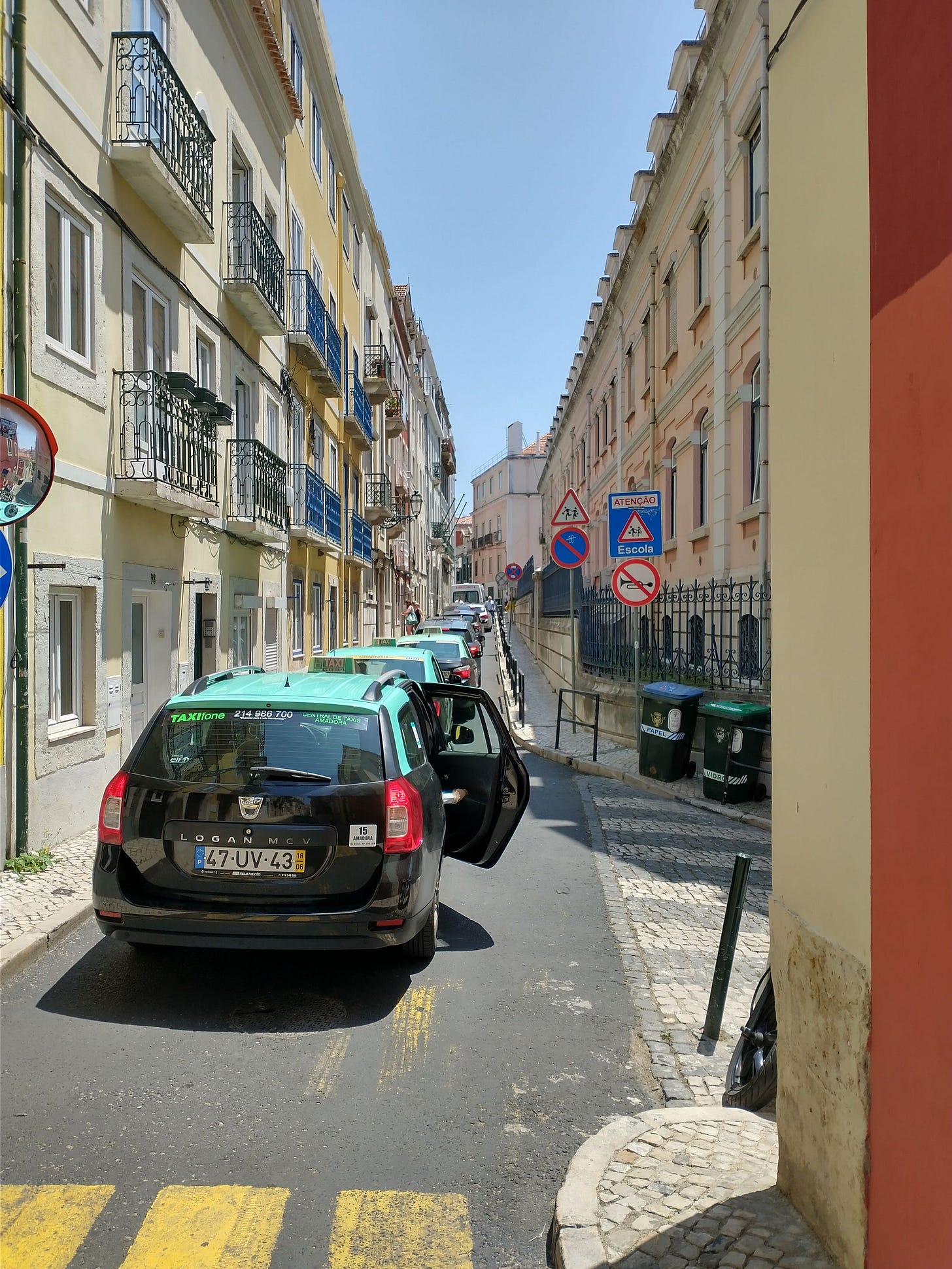
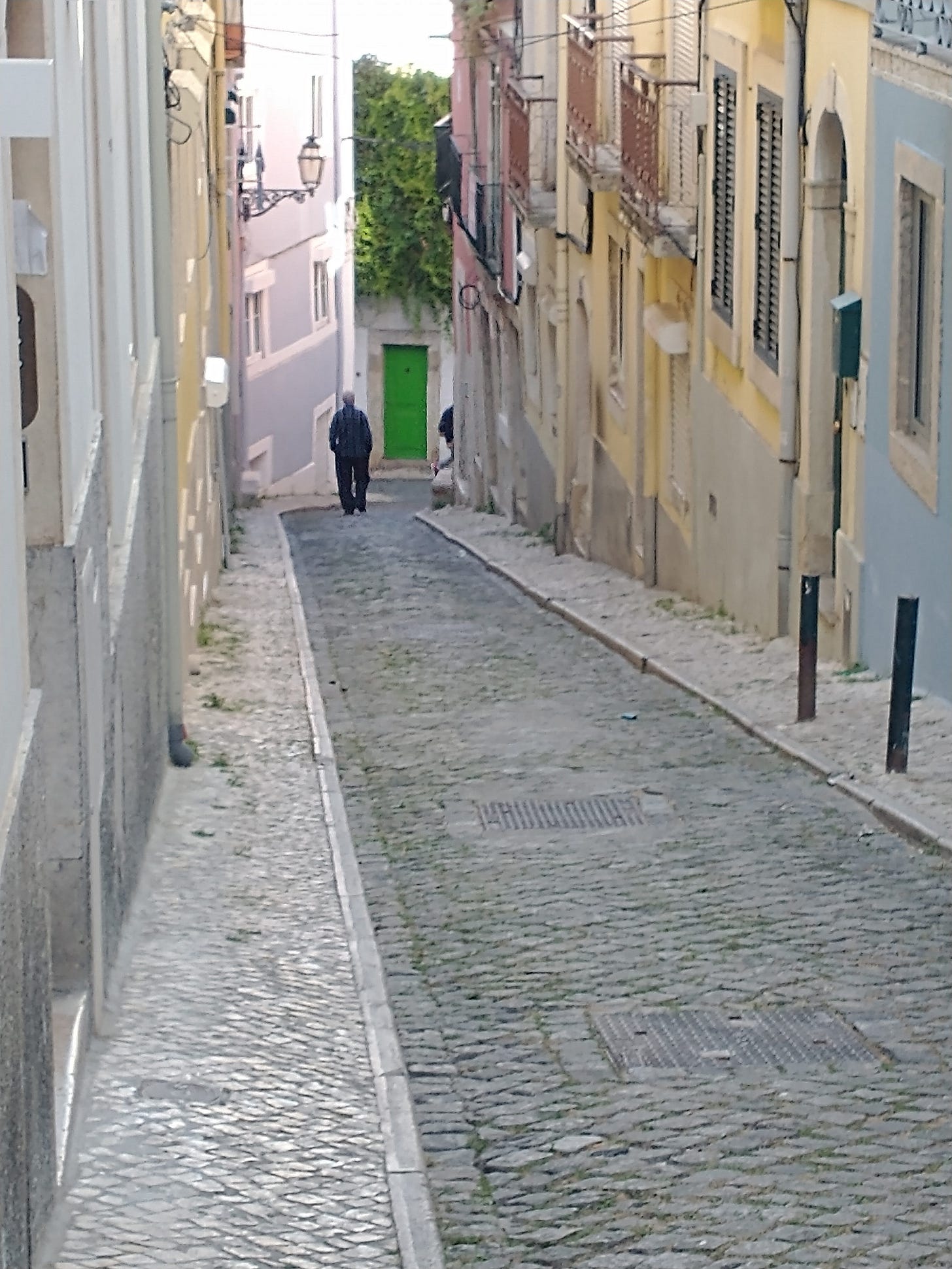
There is no such thing as a gratuitous S&G references. All references to S&G are little moments of joy.
All streets need to be cobblestone and named Appian Way. #1 to several million. Last address a doozie.